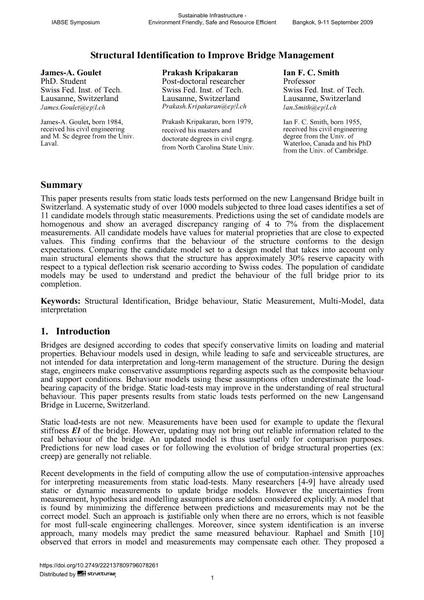Structural Identification to Improve Bridge Management

|
|
|||||||||||
Bibliografische Angaben
| Autor(en): |
James-A. Goulet
Prakash Kripakaran Ian F. C. Smith |
||||
|---|---|---|---|---|---|
| Medium: | Tagungsbeitrag | ||||
| Sprache(n): | Englisch | ||||
| Tagung: | IABSE Symposium: Sustainable Infrastructure - Environment Friendly, Safe and Resource Efficient, Bangkok, Thailand, 9-11 September 2009 | ||||
| Veröffentlicht in: | IABSE Symposium Bangkok 2009 | ||||
|
|||||
| Seite(n): | 120-129 | ||||
| Anzahl der Seiten (im PDF): | 8 | ||||
| Jahr: | 2009 | ||||
| DOI: | 10.2749/222137809796078261 | ||||
| Abstrakt: |
This paper presents results from static loads tests performed on the new Langensand Bridge built in Switzerland. A systematic study of over 1000 models subjected to three load cases identifies a set of 11 candidate models through static measurements. Predictions using the set of candidate models are homogenous and show an averaged discrepancy ranging of 4 to 7% from the displacement measurements. All candidate models have values for material proprieties that are close to expected values. This finding confirms that the behaviour of the structure conforms to the design expectations. Comparing the candidate model set to a design model that takes into account only main structural elements shows that the structure has approximately 30% reserve capacity with respect to a typical deflection risk scenario according to Swiss codes. The population of candidate models may be used to understand and predict the behaviour of the full bridge prior to its completion. |
||||
